The Vorderasiatisches Museum
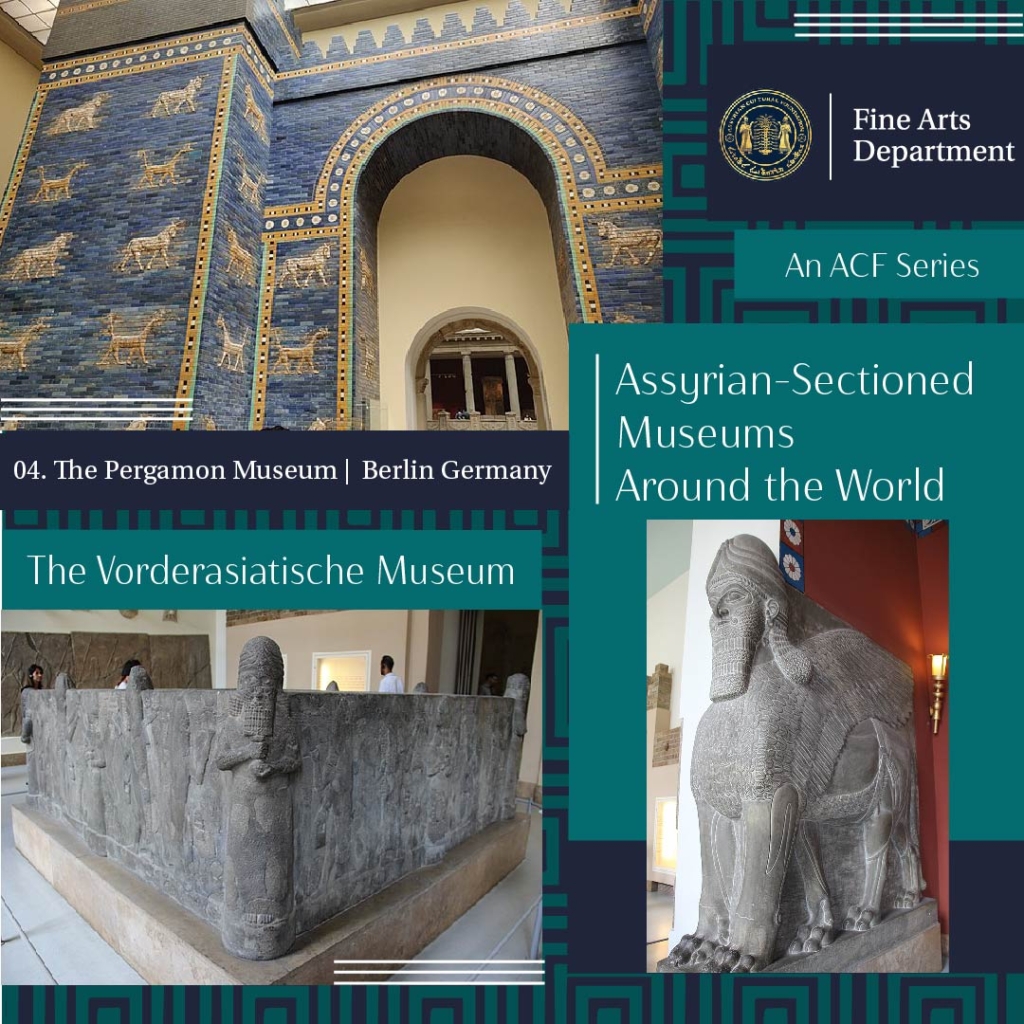
The next museum collection we will be discussing is the Vorderasiatisches Museum in the Pergamon Museum in Berlin, Germany. The collection of ancient near eastern objects began with the discovery of what is likely the most well-known piece in the collection, The Ishtar Gate of Babylon.
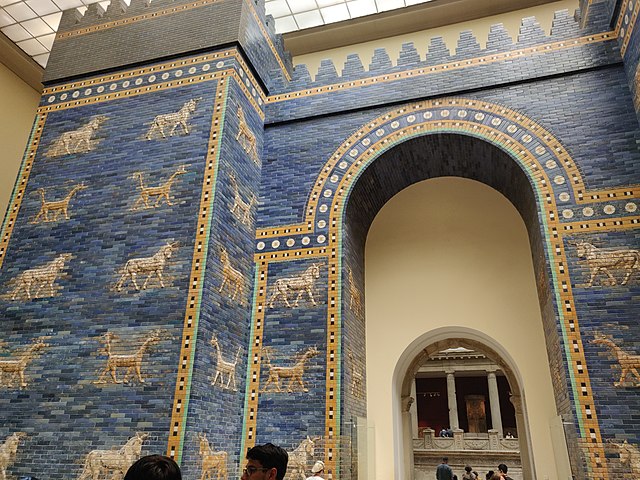
The Ishtar Gate was built in 575 BCE by Babylonian King Nebuchadnezzar II. The gate is constructed out of brick that is coated in a rich blue glaze, intended to mimic the appearance of the precious stone lapis lazuli. It features bas-relief sculptures of lions, which are representative of the Goddess Ishtar, aurochs (a type of extinct bull) which are representative of the storm God Adas, and depictions of the mythical creatures such as mushussu red dragons, which are representative of the God Marduk. The gate was used during Kha b-Nisan each year as the processional way through which the new year’s celebration passed into the city during the reign of Nebuchadnezzar II.
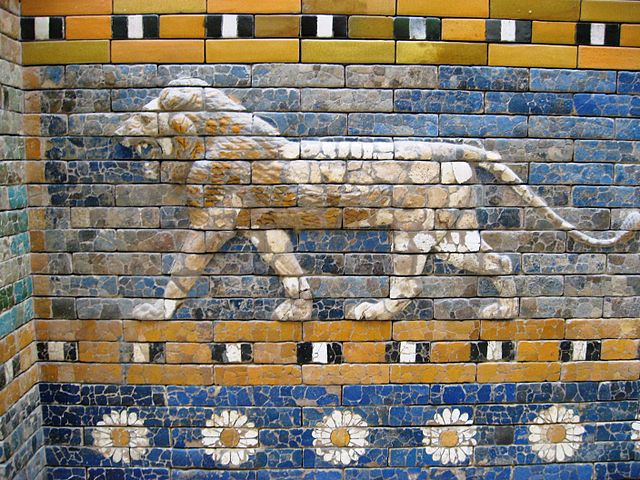
The Ishtar Gate was unearthed by German archeologist Robert Koldewey in a series of excavations that took place from 1899 to 1914. Based on research conducted by British historian Claudius Rich, Koldewey managed to find two royal palaces belonging to King Nebuchadnezzar as well as the Ishtar Gate. The excavation was funded by the German Oriental Society, which was founded in 1898. The presence of this funding pressured archeologists to take actions to recoup the cost of the excavation. This was primarily done through the smuggling of artifacts back to Berlin. They were originally a part of the collection at the Kaiser Friedrich-Museum, now the Bode-Museum. The Ishtar Gate was completely deconstructed, with each individual piece cataloged using a numbering system intended to help the team to reassemble the gate on site at the museum. The individual pieces were hidden in barrels of straw, shipped down the Euphrates River, and eventually made their way to Berlin. The process of reconstructing the gate onsite at the museum was a meticulous undertaking. The museum staff was tasked with sorting through hundreds of barrels containing contents of the Ishtar Gate, which had to be desalinated and reconstructed using a combination of contemporary bricks fired to resemble the blue glaze of the gate. The original gate was constructed in two parts comprised of a larger back section, and a small frontal section. The museum did not have the space to constructed the larger back section of the gate on site, and so those pieces of the Ishtar Gate remain in storage. The reconstruction of the frontal section of the gate, however, remains on display to this day.
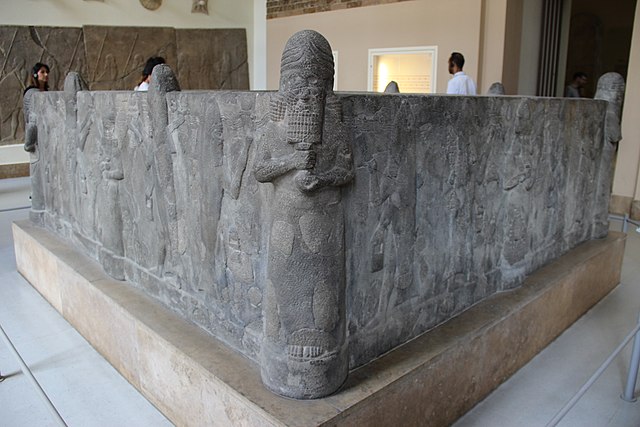
In 1903, there was another significant development in the growth of the collection. Robert Koldewey’s assistant, Walter Andrae, began excavating the Assyrian city of Assur. Assur was the first capital of Assyria, its religious center, and is believed to have been first settled around 2500 BCE. Though later Assyrian kings would declare capitals at Nimrud, Khorsabad, and Nineveh, Assur always remained the religious capital of the empire. It was the location of the Temple of Assur, also referred to as the Old Palace, where some Assyrian kings were returned and buried upon their death. Walter Andrae’s team uncovered various city structures and buildings, including multiple religious temples to various Assyrian Gods and Goddesses such as Sin, Ishtar, Shamash, Anu, Adad, and Nabu.
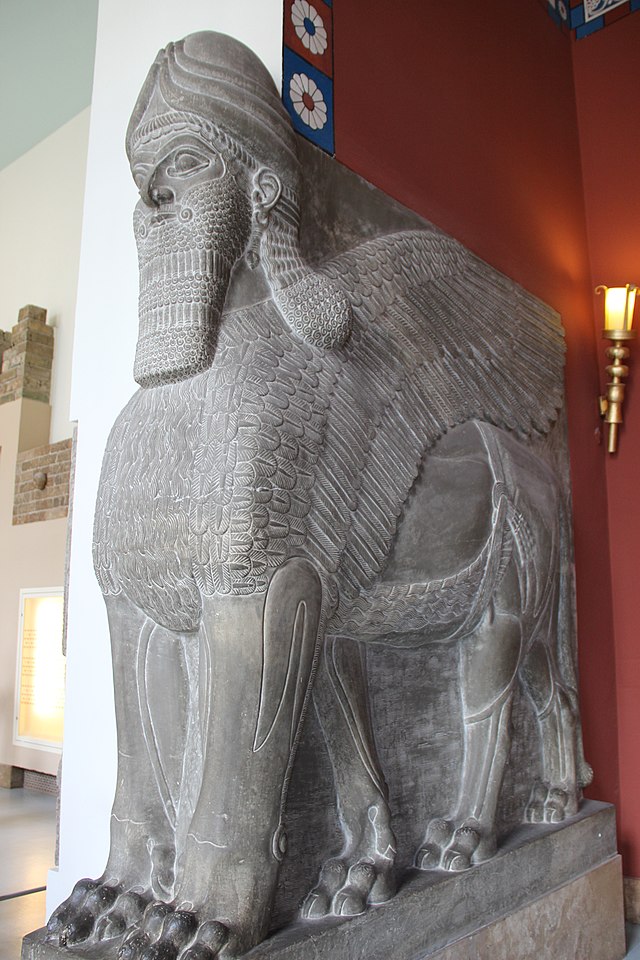
When the excavation ended in 1914, the finds were divided between the Germany and the Ottoman Empire. In the time that the German archeologists were bringing the artifacts back to Berlin, World War I began. The team temporarily stationed in neutral Lisbon Portugal. However, when Portugal declared war against Germany in 1916, the artifacts from Assur were seized and put on display in the Museum of Porto. The objects were returned to Germany in 1926 where, along with other near eastern objects at the Kaiser Friedrich Museum, the collection was moved to the Pergamon Museum. In 1945, during World War II, the Soviet Union stole the Assur works from the museum. They were held in the Soviet Union until 1958 when they were returned to East Germany. The fall of the Berlin Wall in 1989 allowed for another step forward for the community of German archeologists, as now they were able to collaborate with each other across East and West Germany. In 1997, Johannes Renger led The Assur Project. The Assur Project was an academic undertaking aimed at creating a database of the finds at Assur and organizing them into publications.

Today The Vorderasiatische Museum in the Pergamon Museum in Berlin Germany is made up of fourteen rooms which feature objects from ancient Sumerian, Babylonian, and Assyrian society. Their reconstructions of ancient monuments in particular afford visitors the opportunity to walk in the footsteps of the ancient peoples who once built and experienced these objects themselves. By prioritizing shared knowledge and collaboration with other archeologists, the team at the Pergamon Museum has been able to uncover truths about, and piece together our understanding of life in ancient Assyria.
Written by: Melanie Perkins
Bibliography
Berlin, Staatliche Museen. “About the Collection – Vorderasiatisches Museum.” Staatliche Museen Zu Berlin, https://www.smb.museum/en/museums-institutions/vorderasiatisches- museum/collection-research/about-the-collection/. Accessed 9 Feb. 2023.
“Ancient Near Eastern Cultures.” Staatliche Museen Zu Berlin, https://www.smb.museum/en/museums- institutions/vorderasiatisches-museum/exhibitions/detail/ancient-near-eastern-cultures/. Accessed 9 Feb. 2023.
Pedde, Friedhelm. “ANE TODAY – 201501 – Recovering Assur From the German Excavations of 1903-1914 to Today’s Assur Project in Berlin – American Society of Overseas Research (ASOR).” American Society of Overseas Research (ASOR), https://www.asor.org/anetoday/2015/01/recovering- assur/. Accessed 9 Feb. 2023.
